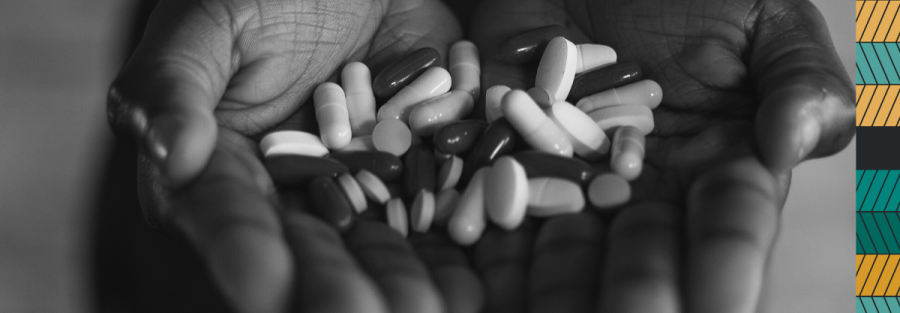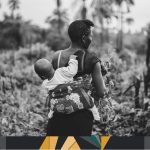Each story from the field piece narrates our work from the perspective of someone working at ARC. Today, Le Beau Taljaard shares his experience supporting health systems strengthening in Uganda

Laying the groundwork for success in Uganda
During the pilot phase of the differentiated service delivery (DSD) project in Uganda that we developed with the ACP of the Ministry of Health, our team met a senior citizen collecting his ARV medication from a pharmacy in Mbarara for the first time. As he was leaving the private pharmacy, where he’d been able to get his government-funded chronic medication, I asked him what his experience with the process had been like. He said he’d gotten his medicine quickly and was now free to continue the rest of his day. “I like this,” he said, “I don’t want to get my medicine any other way.”
That moment showed us what the many months of hard work developing a differentiated delivery solution and running the pilots were for. The litmus test of the success of our work is whether or not our solutions are making a difference in the lives of recipients of care.
Before the pilot, it took people an average of 3.5 hours to get their medication. The man at the pharmacy in Mbarara showed us that there was a real, personal impact for many people because of our solution and that it helped improve his experience of managing his condition.
The start of the journey
Our journey as ARC – Africa’s public health supply chain institution – with differentiated service delivery in Uganda began with a brief from the ACP to decongest healthcare facilities and to find ways to increase the ease of access to HIV medications for recipients of care. To do this, we had to start by understanding the healthcare landscape in Uganda. We worked closely with and received continuous support and guidance from the ACP at different levels as we embarked on the process.
We had to build trust and earn the respect of the many different stakeholders involved in the sector. And we had to place recipients of care at the centre of our thinking so that we could make sure our proposed solutions would actually make a positive difference for them.
Supply chain solutions have to be applied in a way that is relevant to the context. I come from a private sector supply chain background, where I worked mainly with fast-moving consumer goods. Although there was a lot I could bring from that experience into this project, I also knew that it wasn’t as simple as duplicating an existing approach. We needed to think deeply about how the healthcare supply chain works, or can work better, in Africa, and then drill down to understand the nuances and needs in Uganda and how we could addressed them.

Le Beau Taljaard taking notes during a workshop.
The power of data
In this project, one of the most critical components of our work, and one that made the most significant difference to the quality of our relationships with stakeholders, happened before we proposed any concrete solutions.
We knew that to create something that could work in Uganda, we needed to know what the healthcare landscape really looked likeWith lots of assistance and support from the Ministry of Health’s different departments, we undertook an extensive geo-mapping exercise of all the healthcare facilities, including government, private, and private not-for-profit pharmacies, across the country.
The teams spent eight weeks in the field to get the data for the geo-mapping. We used biostatisticians from the different districts to gather the data, as they knew exactly where the facilities were. Some people in the field had to wade across rivers and get to remote locations to get the information for the geo-mapping.
Once the exercise had been completed, it was combined with existing data such as areas of prevalence of people living with HIV by district and numbers of recipients of care by facility. This showed the value of the information, even beyond the DSD project, and we earned critical trust and recognition.
We then had to take the time to see how all the information we had gathered fitted together and develop solutions that would achieve our brief of decongesting healthcare facilities and improving access to medications for people living with HIV in Uganda.
What’s next?
Now, given the success of the first few phases of the project, including conducting an extended pilot across Uganda, we are looking at how to roll out the pharmacy collection model on a national scale, which will include around 200 pharmacies throughout the country.
We are also exploring how to add other essential chronic medicines to the model, starting with medications that treat conditions that constitute comorbidities for people living with HIV, such as diabetes and hypertension.
The decongestion at healthcare facilities has also been positive. At one facility in Kampala, the introduction of the DSD model has decongested around 3,500 patients. This has freed the healthcare workers there to spend more time helping newly diagnosed HIV patients. Three additional weekly AIDS clinics have been introduced due to the changes to the medicine collection strategy.
Our work in Uganda is an important case study for what effective healthcare supply chain solution partnerships can achieve. This project has resulted in invitations from the Ugandan Ministry of Health and other African countries to explore ways to increase the availability of essential medicines for all who need them.
Read more about ARC’s work in Uganda here and here. You can also download our white paper about the DSD project in Uganda here.
About the author
Le Beau Taljaard has over 25 years of experience delivering growth for clients and his own organisations in the FMCG industry. He gained significant experience and expertise in the route to market and supply chain with the Smollan Group, where he participated in and led new business development, establishing new business units, operational implementation, operational/general management and client interaction. Since 2019, Le Beau has been working in the public health sector in Uganda. He has rendered technical assistance to the Aids Control Programme (ACP) and developed and assisted with implementing Alternative Drug Distribution Points (ADDPs).



